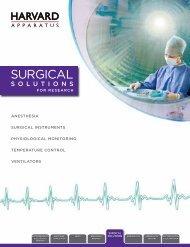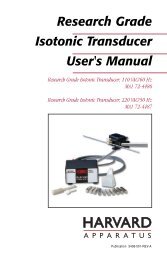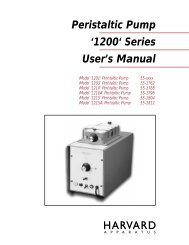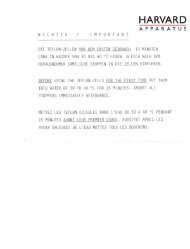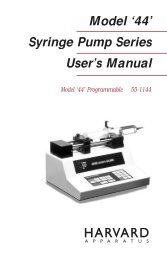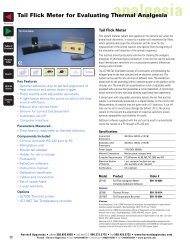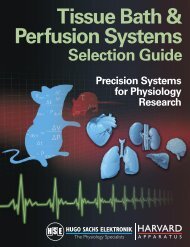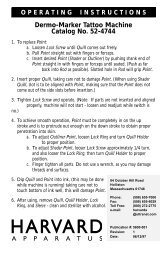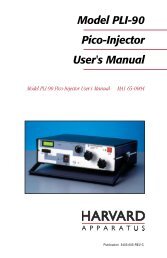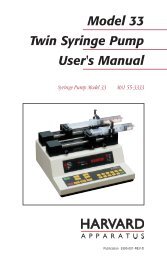Series 1400 Pulsatile Blood Pumps Manual - Harvard Apparatus
Series 1400 Pulsatile Blood Pumps Manual - Harvard Apparatus
Series 1400 Pulsatile Blood Pumps Manual - Harvard Apparatus
Create successful ePaper yourself
Turn your PDF publications into a flip-book with our unique Google optimized e-Paper software.
3<br />
Theory of Operation<br />
H a r v a r d A p p a r a t u s S e r i e s 1 4 0 0 P u l s a t i l e B l o o d P u m p s U s e r ' s M a n u a l<br />
This family of four pumps, all similar in concept but differing in capacity, are intended<br />
to pump blood with minimum damage to blood cells. All pumps feature a mechanically<br />
activated piston moving back and forth in a transparent cylinder. The geometry<br />
of the piston actuation is such that the piston travels to the very end of the cylinder<br />
regardless of the stroke volume selected. This feature insures that blood is completely<br />
emptied from the cylinder at each stroke.<br />
The valve cages and liquid pathway have been carefully designed to provide a streamlined<br />
flow with no sharp edge to minimize hemolysis.<br />
All parts of the liquid pathway can be disassembled for cleaning and sterilization. In<br />
all pumps the volume per stroke and the strokes per minute can be adjusted while<br />
the pumps are running.<br />
The two smaller pumps #1405 and #1407 have mechanically fixed systole/diastole<br />
ratios of .33, that is, diastole lasts twice as long as systole. The larger pumps #1421<br />
and #1423 have electronically variable ratios in which systole can be adjusted to be<br />
25 to 50% of the total pumping cycle.




